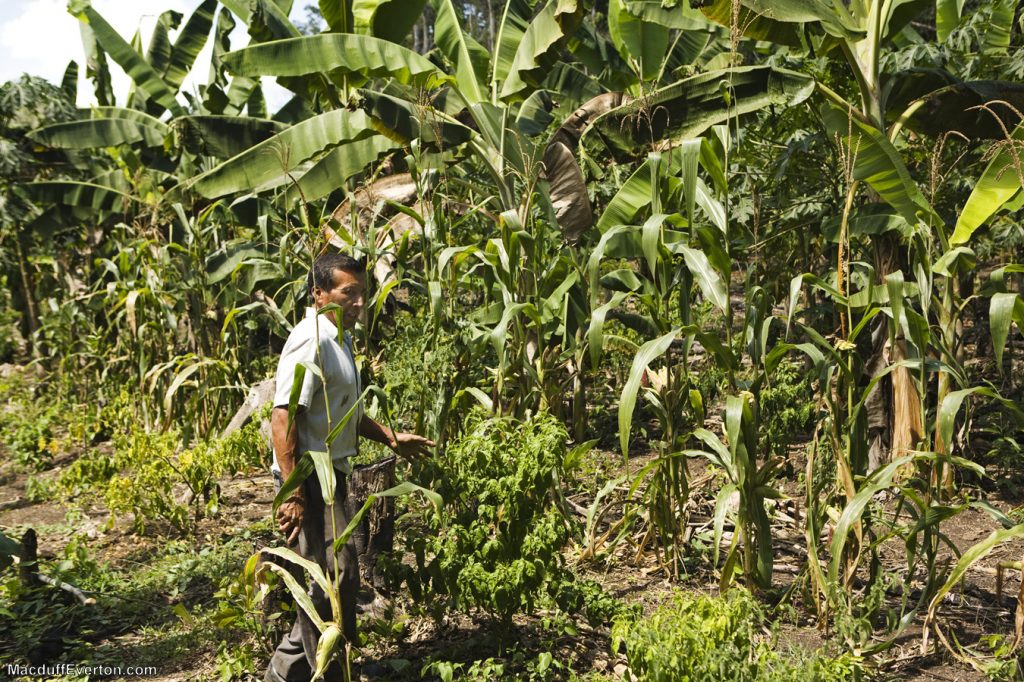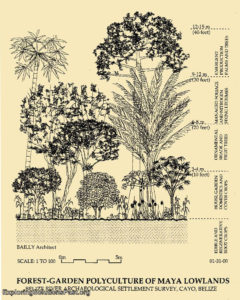What Are Maya Forest Gardens?
The relationship between the ancient Maya and their environment was based on a strategy of resource management and intentional manipulation that resulted in a landscape we call the “Maya forest garden.” The Maya evolved strategies of agriculture that did not include the plowing of land or the destruction of the diverse forests of their tropical world. The Maya worked with the natural landscape to create sustainable local forest gardens that provided all their needs for food, fiber, medicine, and construction while enriching the integrity of the forest.

Mimicking the forest structure, they evolved polycultivation methods that reduced risks of failure, managed climatic instability, prevented soil degradation, and integrated both intensive and extensive labor techniques that increased yields without compromising the health of natural ecosystems. These same land management traditions persist today, creating a rich, biodiverse environment that provides habitat for animals while simultaneously meeting the needs of people.
 Heterogeneous and biodiverse , forest gardens constituted the strength of the Maya community in the past, relying on the traditional knowledge of local farming households. Today, Maya forest gardeners’ intimate knowledge of their landscape is a model of a sustainable co-creative process between people and their environment that can provide inspiration for people all over our planet.
Heterogeneous and biodiverse , forest gardens constituted the strength of the Maya community in the past, relying on the traditional knowledge of local farming households. Today, Maya forest gardeners’ intimate knowledge of their landscape is a model of a sustainable co-creative process between people and their environment that can provide inspiration for people all over our planet.
Sadly, there are many who still argue that the ancient Maya used poor agricultural practices that led to the destruction of forests, farmland, and ultimately the decline of their civilization and way of life. More recent and comprehensive research, however, proves otherwise. In an exciting development, many scientists are now rediscovering the brilliance and sustainability of many indigenous farming practices, and are working to change the damaging public perception this controversy has created.